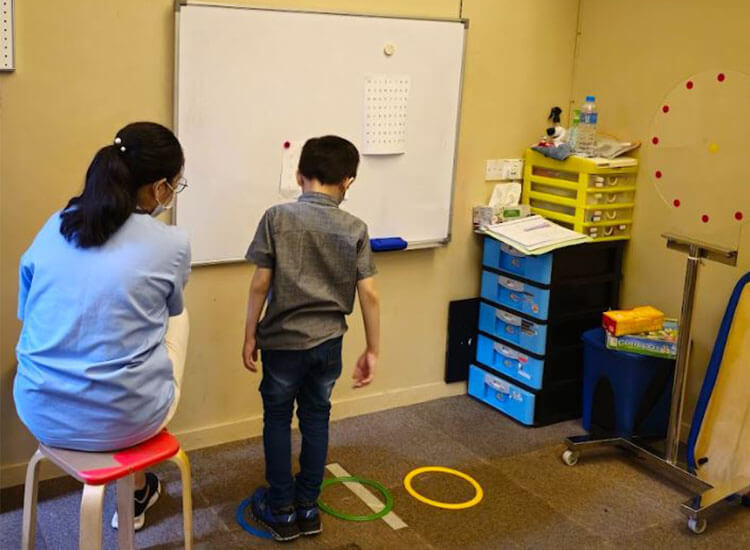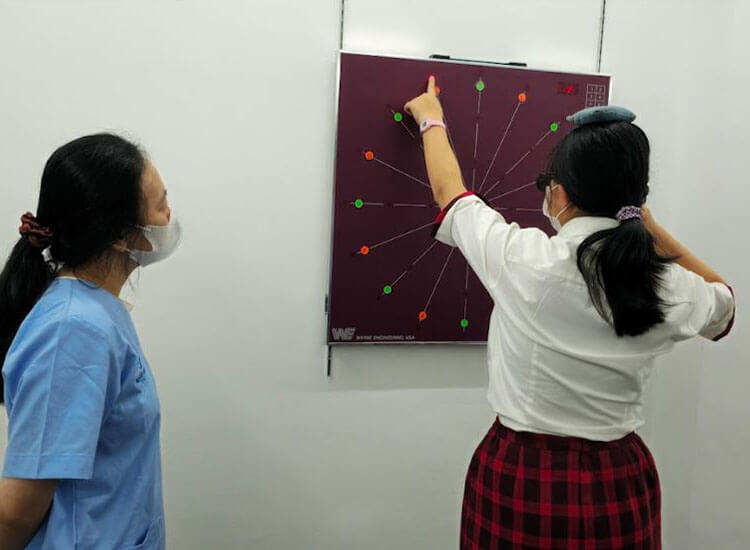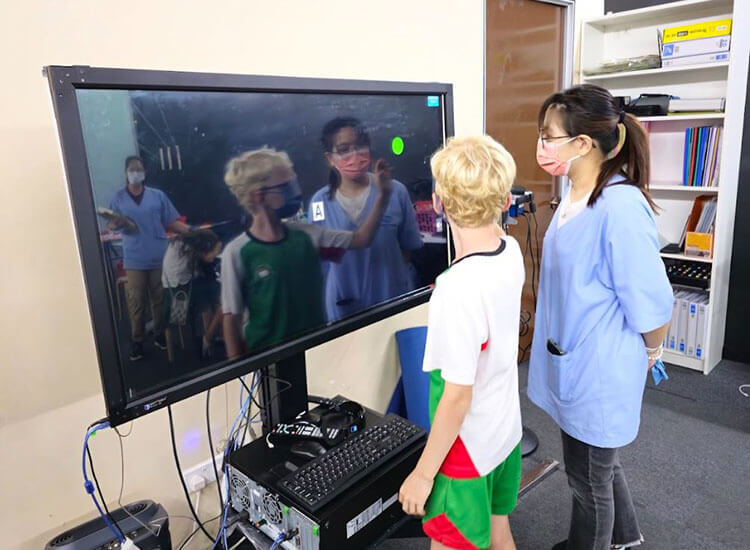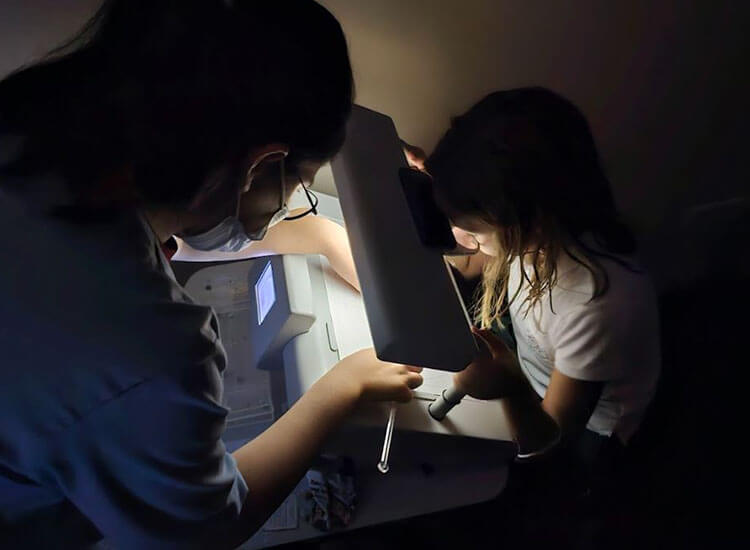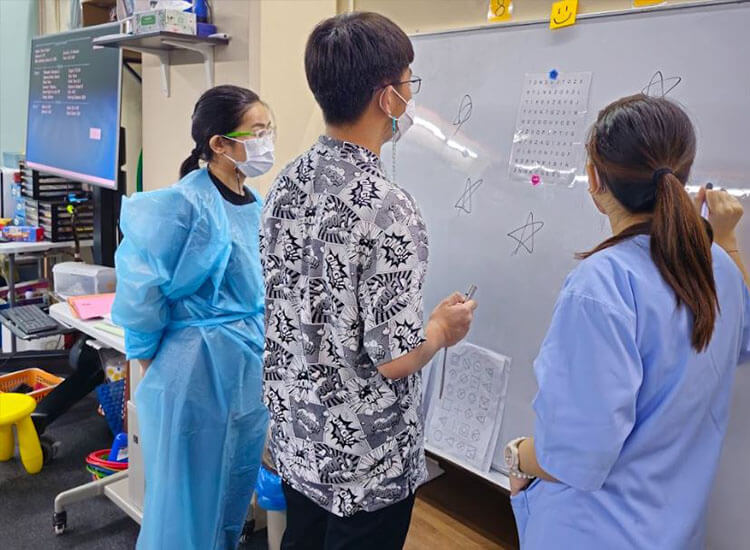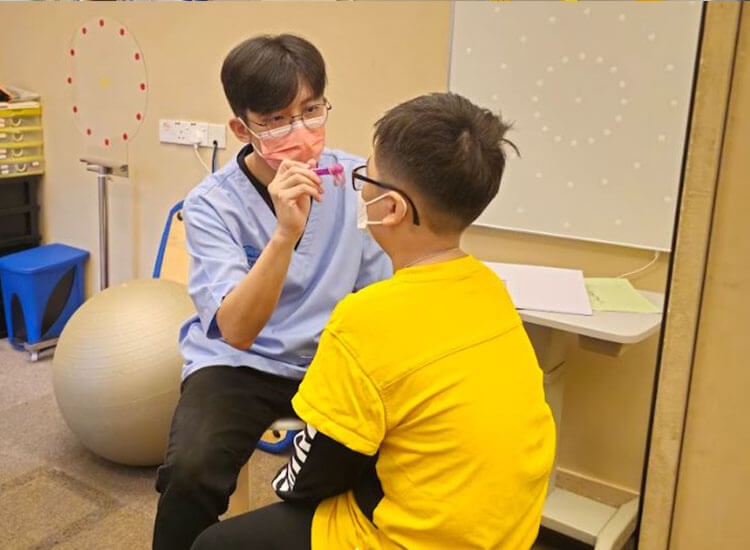Services
What DOES Neuro Vision therapy pertain to?
Our center specializes in diagnosing and addressing vision disorders that can affect reading, learning, and everyday activities. While we do work with adults, our primary focus is on children, who greatly appreciate the warm and caring atmosphere our staff creates during the Neuro-Vision Therapy testing process.
To prepare your child for the evaluation, it’s important to reassure them that there will be no shots and no wrong answers. Ensuring they have a good night’s sleep and a meal containing protein and vegetables (if possible) before the appointment can also be beneficial. The evaluation itself is comprehensive and typically lasts about 1 ½ hours. Following the evaluation, we schedule a separate appointment where our Neuro-Developmental optometrist meets with both parents to gain a deeper understanding of how the vision problem is affecting your child’s life. Combining this information with test results, the optometrist designs a personalized therapy plan to ensure your child’s success. The initial step in the Neuro-Vision Treatment program involves a thorough examination to determine if it’s the most suitable course of action. With extensive experience in working with patients of all ages, our optometrist excels at making younger patients feel at ease during this examination. It’s important to note that Neuro-Vision Treatment, supported by the American Optometric Association, is distinct from “Vision Therapy” offered by others and is carefully overseen by our Board Certified Neuro-Developmental & Behavioral optometrist.
Neuro Vision Therapy is either not merely or goes beyond…
The Bates Method – A Self-Directed Vision Improvement Technique Created in the 1920s It’s important to note that the Bates Method should not be conflated with Vision Therapy. The Bates Method, developed by ophthalmologist W.H. Bates and outlined in his 1920 book “Perfect Sight Without Glasses,” represents a separate approach. Conversely, Optometric Vision Therapy has continued to advance well into the 21st century, incorporating new research, treatment technologies, and collaborative efforts with medical professionals such as neurologists, occupational therapists, and audiologists.
Recent Research by the National Eye Institute, National Institutes of Health New research from the National Eye Institute, National Institutes of Health, highlights successful treatments for conditions like Lazy Eye (Amblyopia) in older children and addresses Convergence Insufficiency. Additionally, neuroscientists have made advancements in our understanding of neuroplasticity, demonstrating that the adult brain is more capable of change than previously believed.
Self-Help Eye Exercises, Pencil Push-ups, Kits, or Computer ProgramsSelf-directed eye exercise programs, like the now-discontinued See Clearly Method or the Vision for Life program, should not be confused with Vision Therapy.
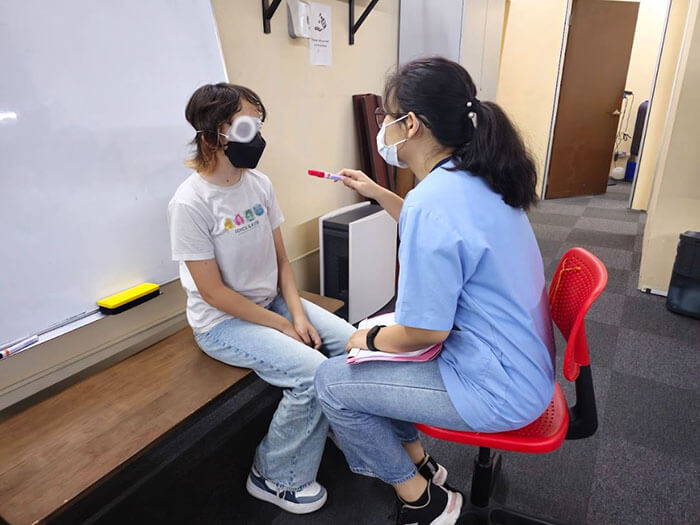
Vision Therapy involves therapeutic procedures supervised by a Neuro-Developmental & Behavioral optometrist or a vision therapist, as well as the use of medically regulated devices such as lenses and prisms. These self-directed programs cannot adequately replace professional evaluation and the tailored solutions offered for binocular vision conditions, including Amblyopia (Lazy Eye), Strabismus (Congenital Esotropia, Intermittent Exotropia, Hypertropia, etc.), Anisometropia, or Convergence Insufficiency Disorder.
Neuro Vision Therapy IS NOT orthoptics ALONE
Neuro Vision therapy programs do incorporate orthoptics, but there are important distinctions between Vision Therapy and orthoptics. Orthoptics, a medical term for eye muscle training procedures administered by orthoptists or optometrists, primarily address issues related to eye teaming and visual clarity (acuity). It’s crucial to note that there are significant differences between Orthoptics and Neuro-Vision Therapy, which encompasses Orthoptics.
Orthoptics primarily views strabismus as a problem related to eye muscles and focuses on strengthening those muscles. In contrast, Behavioral & Neuro-Developmental Optometrists who offer Neuro-Vision Therapy consider the entire neurological control system of the eyes, training the comprehensive visual system and the individual as a whole. Neuro-Vision Treatment brings about changes in the entire nervous system and reflexive behavior, resulting in a long-lasting cure. Typically, orthoptics involve home-based therapy, while Neuro-Therapy is predominantly conducted under the supervision of a Board Certified Behavioral & Neuro-developmental optometrist in an office setting, with home therapy serving as a supplementary component. Recent scientific research has demonstrated that a combination of office-based Vision Treatment with homework tends to be more successful than relying solely on home-based therapy.
FREQUENTLY ASKED QUESTIONS
Do other centers offering vision therapy services provide the similar service as NVS?
Since the term Neuro-Vision Therapy is not legally protected in Asia, it can sometimes be confused with services offered by non-optometric centers providing Vision Therapy or Myopia control Vision Therapy. It’s important to note that our office’s Neuro-Vision Treatment holds certifications from international boards, including titles like FCSO, FNORA, FCOVD, and FACBO.
Fellow of College of Syntonic Light Therapy,FCSO
Fellow of Neuro Optometric Rehabilitation Association,FNORA
Fellow of The Australasian College of Behavioural Optometrist ,FACBO
Fellow of The College of Optometrists in Vision Development, FCOVD
What kind of resolution is usually suggested?
Depending on the specific issue identified, glasses may offer a solution. If glasses alone cannot address the vision problem, Neuro-Vision treatment becomes necessary.
Neuro-Vision therapy can be likened to “physical therapy” for the eyes and visual system. It serves as a valuable tool that not only enhances our patients’ vision but also brings about improvements in various aspects of their lives.
The initial step in a Neuro-vision treatment program involves a comprehensive examination conducted by Mr. Stanley to determine if this approach is the most suitable course of action. With his extensive experience in working with patients of all ages, he creates a comfortable environment for younger patients during the examination.
Subsequently, he will prescribe a personalized Neuro-vision therapy program designed to train your eyes in proper coordination, tracking, perception, and focus. Strengthening these fundamental visual skills can significantly transform your visual experience, making activities like reading much more enjoyable and accessible.
Research has demonstrated that Neuro-vision treatment can play a pivotal role in extending visual attention spans, particularly for children learning to read. Often, children who had previously struggled with reading can greatly improve their performance by mitigating the effects of their vision issues. Neuro-Vision therapy empowers children to embrace learning, fostering confidence and happiness.
What tools and devices are employed by a vision therapist?
Similar to how a physical therapist utilizes equipment like treadmills or weights, a vision therapist employs advanced tools such as prisms, eye patches, filtered lenses, computerized systems, and a range of specialized equipment during Neuro-vision treatment sessions. In our practice, we make extensive use of interactive computer programs that are particularly engaging for our younger patients. These programs not only provide a well-established and more efficient approach to therapy but also make the sessions enjoyable, keeping children motivated to participate. Consequently, we have observed that our patients achieve faster and more substantial results due to the engaging and “fun” nature of these programs.
What is the duration of a Neuro-Vision Therapy program?
The number of in-office visits necessary varies based on the diagnosis and the patient’s age. Typically, Neuro-Vision therapy programs entail one to two weekly in-office sessions, spanning several months as per the individual’s requirements. Additionally, we often provide home exercises to complement the in-office therapy.
Is Neuro-Therapy identical to "eye exercises," "others vision therapy," "pinhole glasses," or "orthoptics"?
Numerous programs and techniques exist for enhancing vision, which are distinct from Neuro Vision Therapy. These alternatives may include methods like colored lenses or advertised programs promising rapid vision improvement. Visual therapy, in general, aims to boost visual development and strength.
Orthoptics, for instance, is a technique aimed at aligning the eyes through exercises. In some cases, depending on the diagnosis, the Neuro-therapy program may incorporate orthoptics. Nevertheless, Neuro Vision Therapy encompasses a broader range of elements beyond orthoptics. This includes:
1. Pursuit and saccade therapy, enhancing the speed and accuracy of eye movements.
2. Visual-vestibular therapy, integrating eye movements with balance.
3. Visual perceptual therapy, improving visual information processing.
4. Eye-hand coordination therapy, developing visually guided movement.
5. Accommodative therapy, enhancing focusing stability, flexibility, and comfort.
6. Visual attention therapy.
7. Peripheral awareness therapy, promoting simultaneous use of vision to process multiple inputs.
8. Visual-spatial awareness, covering aspects like laterality, directionality, and visual imagery.
9. Visual-auditory integration.
10. Orthoptics, which deals with the mechanics of eye movements.
It’s important to note that Neuro Vision Treatment is meticulously overseen by a Board Certified Neuro-Developmental & Behavioral optometrist and is distinct from Vision Therapy offered by others. Furthermore, it is endorsed by the American Optometric Association as a clinical treatment for specific visual deficits.

